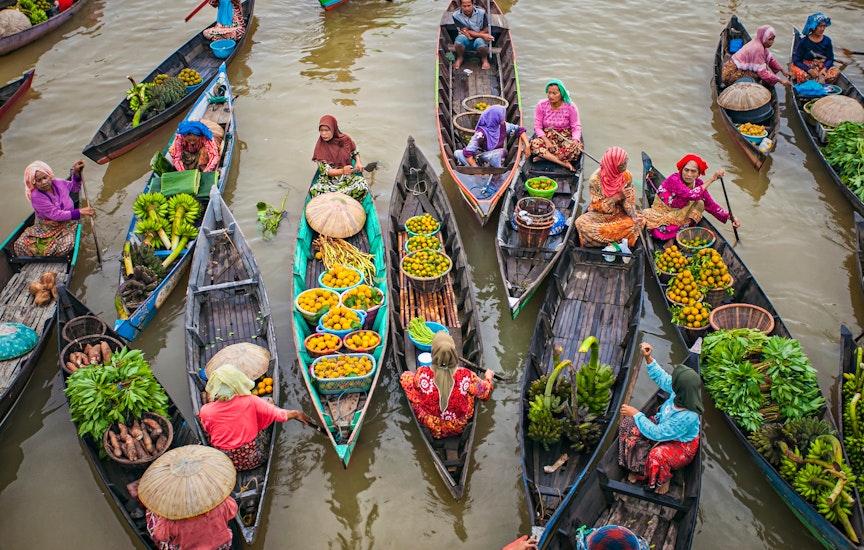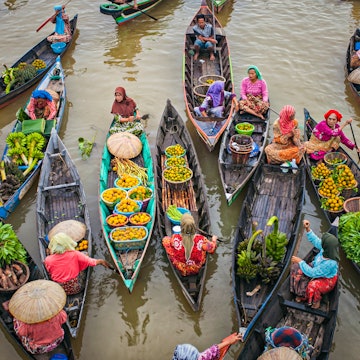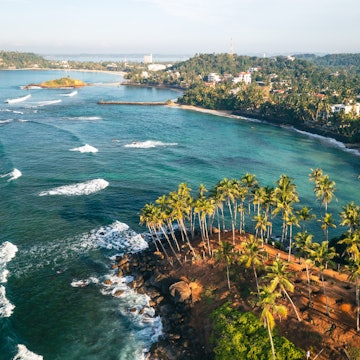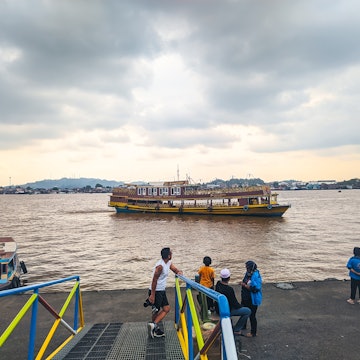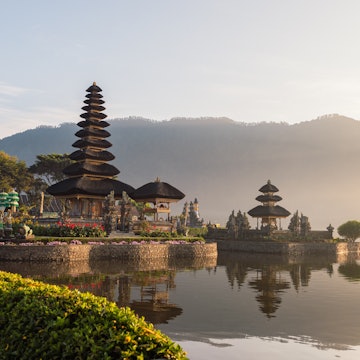

A diver explores the coral reef in Raja Ampat, Indonesia. Darryl Leniuk / Getty Images
Stretching more than 4000km from east to west, Indonesia's sprawling, island-packed jungle archipelago offers many opportunities for active and adventurous travellers. Superb diving and snorkelling showcase a diverse and colourful underwater seascape, while above the water, challenging surf breaks draw bold board-riders from around the world. On land, trekking, cycling, white-water rafting and wildlife watching all combine in a landscape of rugged peaks, tropical jungles and surging rivers.
Indonesia is situated along the Pacific Ring of Fire, and earthquakes and volcanic eruptions are not uncommon and may affect travel to some regions. Though travellers should check foreign office travel advice before setting out, there is no shortage of adventure here.

Hiking and trekking
Indonesia’s location extending along the equator means that trekking conditions can often be challenging. This immense country offers everything, however, from multi-week expeditions across the mountains of central Borneo to gentle family strolls among the paddies of Ubud. Because of the hot, tropical climate, the most idyllic trekking is usually in the highlands. The rolling hills of Tana Toraja in Sulawesi offer perfect trekking conditions amid picturesque landscapes, even by Indonesian standards. Also consider Bukittinggi (meaning ‘High Hill’) in the highlands of Sumatra, one of the world’s most underrated trekking bases. The mountains of Flores (ridged with more than 17 spectacular volcanoes) and beautiful Danau Toba in North Sumatra are wonderful trekking regions that also take you through traditional villages, offering additional cultural experiences. Even on Bali it’s possible to get off the beaten track. The virtually unknown valleys around Sidemen Road are gaining a reputation with hikers keen to avoid the crowds around Ubud.
Diving and snorkelling
The Coral Triangle, spanning mostly Indonesian waters, contains about 75% of the world total of coral species, which means there is more than enough to explore below water. Nusa Lembongan’s manta rays and sunfish attract hundreds of Bali-based snorkellers each day, and the Gili Islands are also a haven for snorkellers. Diving the walls and reefs around little Menjangan Island on Bali’s northwest tip can surpass even the famous Maldives, and dolphins, pilot whales and even whale sharks are occasionally seen here. While technical divers can test their skills in a whole range of conditions throughout the country, even casual snorkellers can enjoy dramatic spots like Komodo’s ‘Manta Alley’ where giant manta rays loom like spaceships, or Sangeang Volcano where you can swim among hot underwater air vents. Of late, Komodo’s diving crown has been usurped by majestic Raja Ampat, a region of spectacular beauty and world-class diving experiences among whale sharks and an estimated 1427 species of fish. Sulawesi is another highlight with Pulau Bunaken, and the Wakatobi Archipelago offers practically unexplored reefs among its 143 islands.
Rafting and kayaking
For an island renowned for its waves, Bali has more than its share of tranquil waters for paddling, too. The entire north coast is an expanse of turquoise reefs (visited by dolphins, turtles and even whales) and mangrove-fringed inlets. It’s possible to rent kayaks from beaches at Lovina and Pemuteran and from many resorts. At West Bali’s Menjangan, you can paddle through an inlet inhabited by wild deer and over reefs swarming with tropical fish. You’ll struggle to convince yourself that you’re still on Bali. For something less tranquil, Ayung River near Ubud is the country’s most popular Grade II-III white water rafting haven, but Telaga Waja River in the island’s east is equally beautiful and less crowded. West Java’s Citarak River offers wilder Grade IV white water thrills, as does Tana Toraja’s Sa’dan River, where you can join a three-day rafting expedition. In Bukit Lawang, you can combine overnight jungle treks among wild orangutan with a tube-riding descent on the Bohorok River.
Volcano climbing
Indonesia has more active volcanoes than any other country on earth with an estimated 127. Though eruptions and activity can prevent travellers from getting up close at any given time, many of Indonesia's volcanoes are excellent trekking opportunities. The early morning trek up Bali’s Batur volcano draws hundreds of hikers each day, and East Java’s dramatic Kawah Ijen (with its mysterious ‘river of blue flames’) is almost as popular. Some truly astounding volcanic landscapes that make world-class hiking areas are Tomohon in northern Sulawesi, the highlands around Bandung, West Java and the craters and peaks of Halmahera in Maluku. Gunung Batukaru is the second-highest peak on Bali (and the most westerly volcano), yet it rarely sees a trekker and remains almost unvisited. It offers incredible views over much of the island and all the way to the smouldering peak of infamous Gunung Agung.
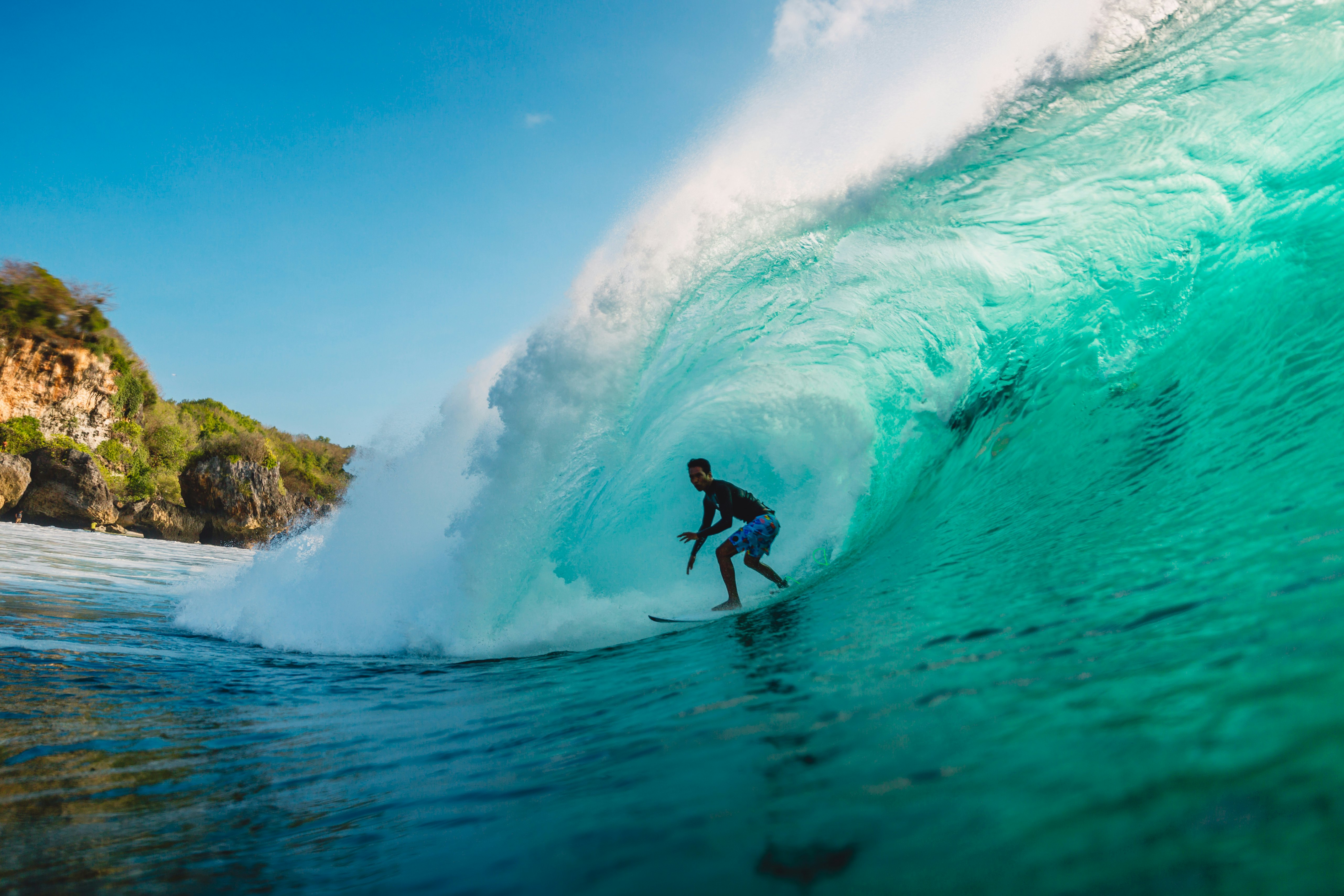
Surfing
G-Land in Java, Uluwatu in Bali, Occy’s Left of Sumba, ‘the Point’ at Lagundri Bay, Nias – Indonesia has been stoking ‘surfari’ urges since before the word ‘gnarly’ was coined. Southern Bali’s Bukit Peninsula, along with nearby Seminyak and Canggu, are the epicentre of the region’s more recent surfing explosion. Any surfer who complains about crowded waves, however, need just remember that in a country with more than 50,000km of coastline, there will always be an unsurfed wave if you look for it. The Mentawai Islands off Sumatra have long drawn dedicated surfers, but other hotspots earning a reputation as ‘the new Bali’ are the islands of Sumbawa in West Nusa Tenggara and Krui in South Sumatra. The virtually unsurfed north coast of West Papua picks up the same North Pacific swell that hits Fiji and Hawaii. Rote, south of West Timor, is becoming known for top-class Indonesian waves, with spots like Boa and T-Land. Nevertheless, every travelling surfer has their own idea of an inviolable ‘secret spot’ in Indonesia they're reluctant to share, so keep a keen eye out for locations.

Wildlife watching
You’ll be spoiled for choice if your goal is to spot wildlife during your Indonesia travel adventures. The only country that is home to two species of orangutans, you’ll see Borneo orangutans at Tanjung Puting National Park in Kalimantan, while Bukit Lawang offers a great chance to watch rarer Sumatran apes. Searching for dragons? Komodo Island has become a byword for adventurous Southeast Asian safaris, but head to neighbouring Rinca for a wilder and more unpredictable dragon-watching experience. West Bali National Park is rarely visited, yet it is home to various types and species of monkeys, deer, wild pigs, giant monitor lizards, flying foxes and incredible bird life, and serves as a great wildlife introduction for kids. As you cross the famous Wallace Line east of Bali, you enter into a zone where Australasian species replace Asian, until you arrive in West Papua with its birds of paradise, marsupials and bizarre tree kangaroos. Huge Kerinci Seblat is one of Indonesia’s most underrated national parks, and offers a chance to see elephants, clouded leopards and the world’s last viable population of Sumatran tigers.
Cycling
Depending on your stamina and dedication, the looming walls of Bali’s volcanoes could represent a challenge of Tour de France proportions – or a delightful free-wheeling, adrenalin-rush descent. Traffic can be heavy on Bali, but cycling tour operators can transport you to the heights and guide you back down the relatively peaceful roads that cut along the ridges and paddies. Car-free islands like the Gili Islands and Nusa Lembongan make great places for families to potter by cycle. If you’re looking for something more challenging, the 666km Trans-Flores Highway makes a memorable road-trip, but for something more ‘mid-range’, try Bali’s flatter and less crowded north coast road, where you can pedal through some friendly and unique communities that few visitors ever see.
Sustainable travel
While overtourism has been at least partly responsible for many of Indonesia’s social and environmental problems, sustainable tourism is also providing some of the most viable solutions. A number of initiatives and organisations have stepped in to address ecological and locals’ needs in areas that drastically needed support. These organisations, both global and local, are working to prevent further eco-damage and raise awareness of indigenous tribes to help them thrive. Indonesia’s growing fleet of liveaboard boats and, especially, traditionally-built pinisi (indigenous Bugis tall-ships) are the pioneers of the country’s tourism future, providing eco-friendly accommodation in areas that would otherwise be beyond the reach of visitors. In lesser-known and culturally fascinating archipelagos like Alor and Maluku, boats like these can be the only accommodation available and – through sourcing local products, hiring local guides and supporting local communities – they often provide vital tourism revenue that can keep indigenous cultures alive.
https://shop.lonelyplanet.com/products/lonely-planets-best-in-travel-paperback-2019






